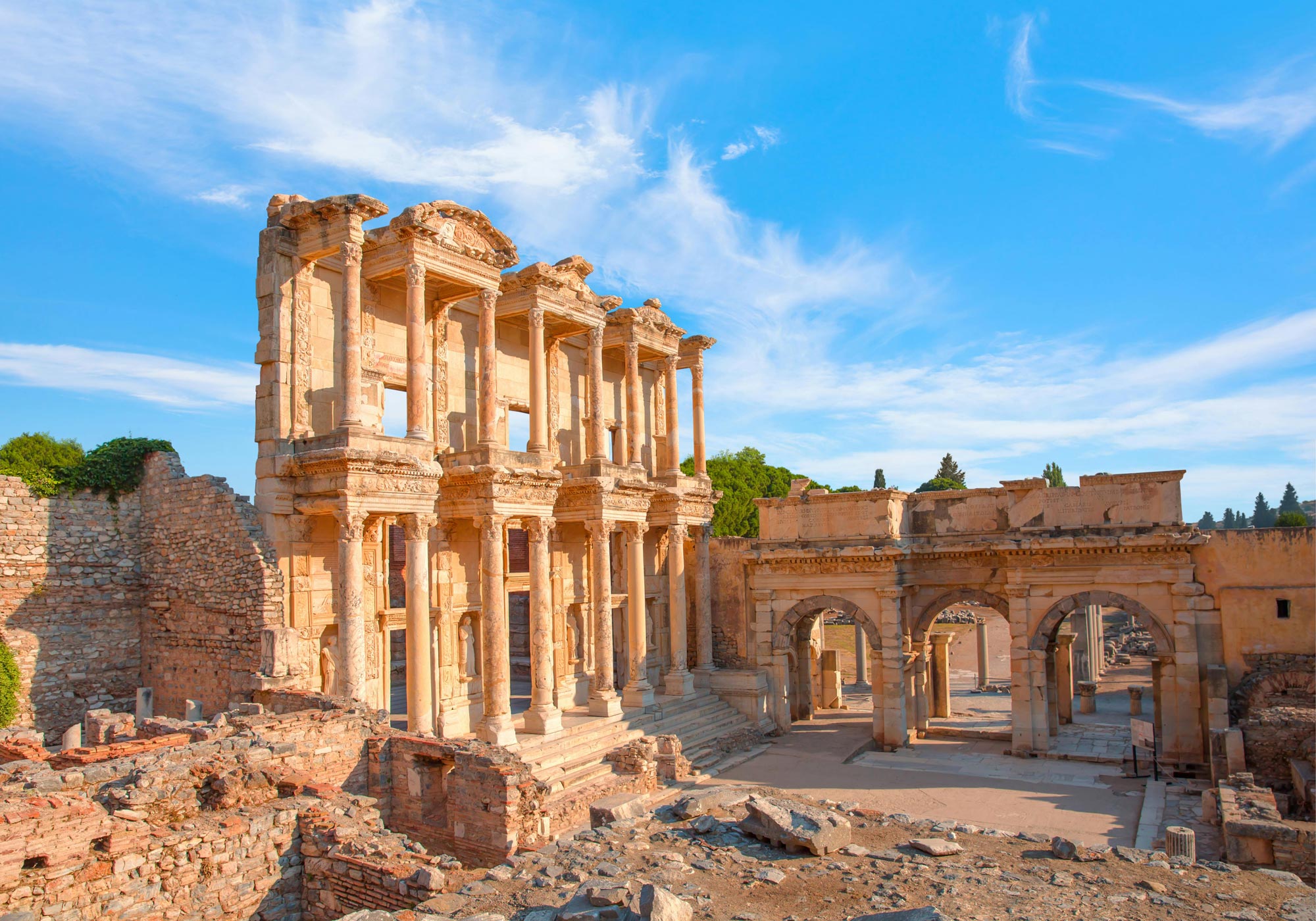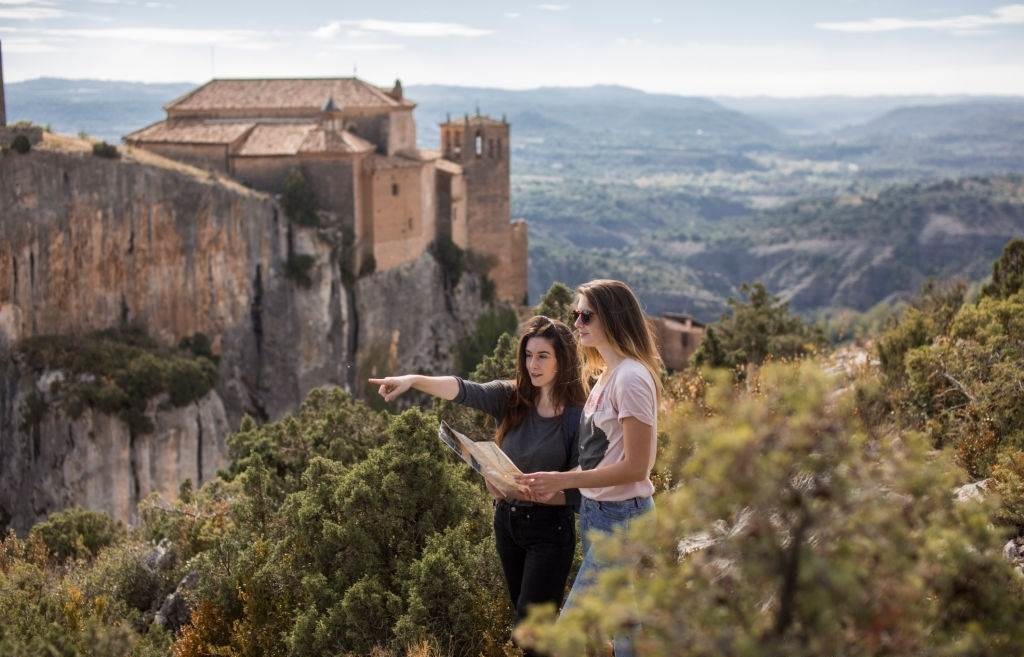Few ruins anywhere in the Mediterranean command attention quite like the Library of Celsus. Its two-storey marble façade, layered with columns, pediments, and statues, rises above the Curetes Way in ancient Ephesus like a stage set left standing after the actors departed nearly 2,000 years ago. Although the reading room behind it vanished centuries ago, the structure endures as both an architectural marvel and a poignant reminder of Rome’s intellectual ambitions in Asia Minor.
Library of Celsus Origins in the Golden Age of Ephesus
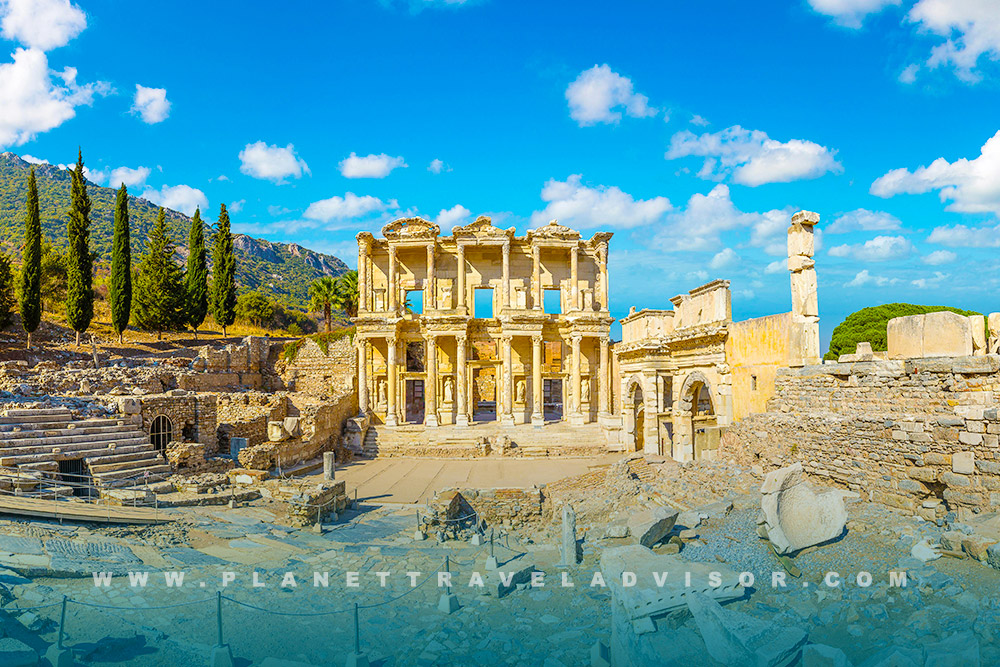
Ephesus flourished under Roman rule, reaching perhaps 200,000 inhabitants and boasting the Temple of Artemis, vast agoras, and a 24,000-seat theatre. Into this prosperous setting, the Library of Celsus was commissioned around by the local consul, Tiberius Julius Aquila Polemaeanus, to honor his father, Tiberius Julius Celsus Polemaeanus, a former governor of Asia. Construction continued after Aquila’s death and was completed under Emperor Hadrian, sometime after 120 CE.
The dual purpose was unusual: the building served both as a public library and as Celsus’s mausoleum, his marble sarcophagus set in a crypt beneath the reading-room floor, an honor rarely granted within a city’s limits.
Who Was Celsus, And Why Did He Get a Library?
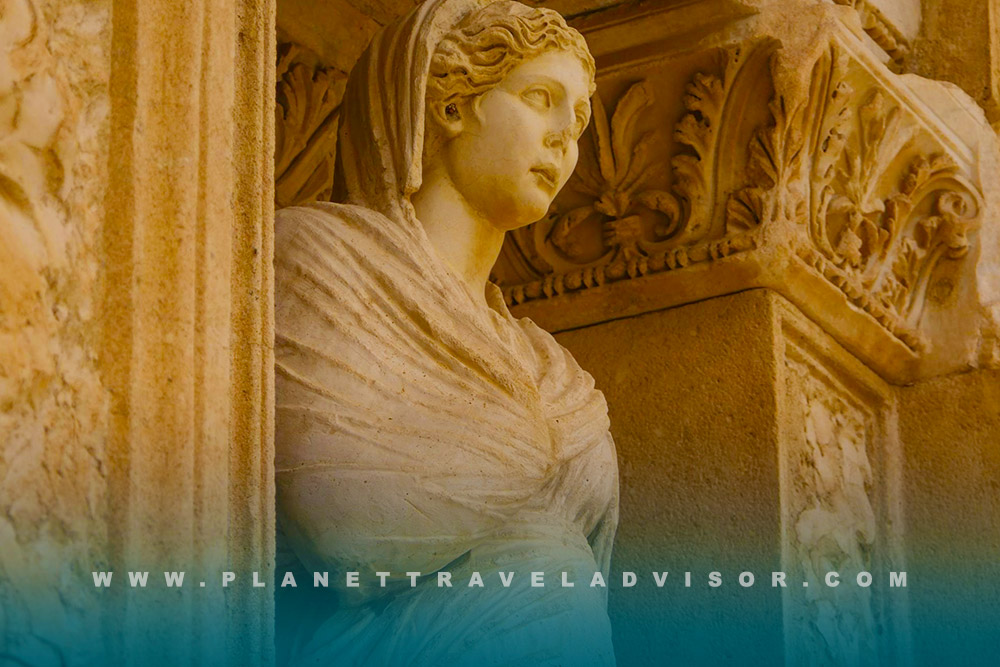
Celsus rose from a Romanized Greek family to become a legion commander, senator, and consul in . Later, he oversaw Rome’s public buildings, earning wealth and prestige that his son sought to memorialize permanently in their home city.
The project cost an estimated 25,000 denarii, millions in today’s currency, and reflected both filial piety and civic generosity. Statues of Celsus once stood on the upper register; one cuirassed portrait now resides in Istanbul’s Archaeological Museum.
Architectural Illusions and Innovations of the Library of Celsus
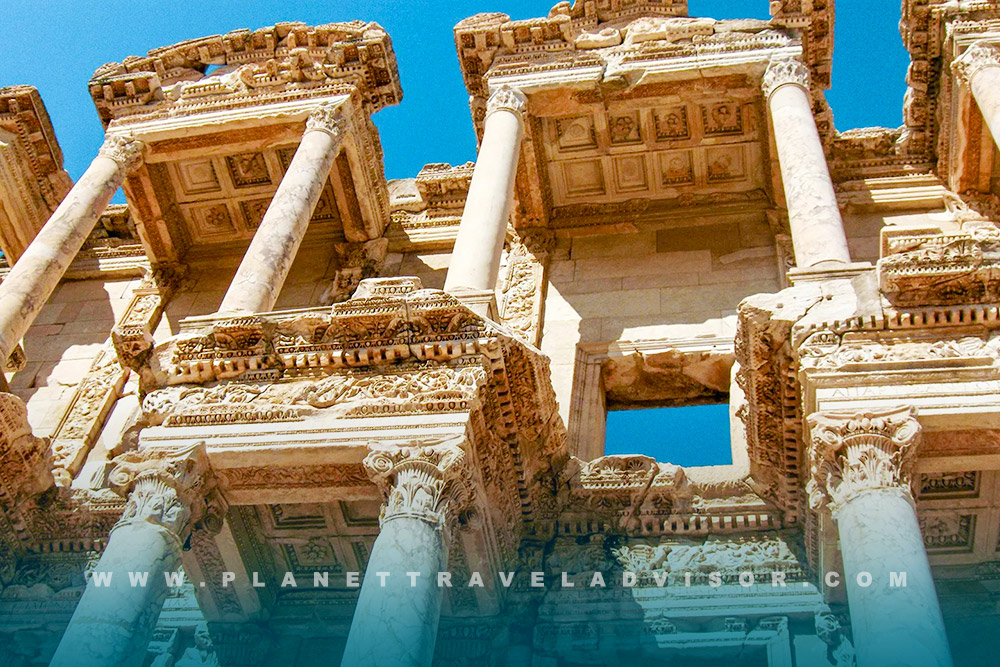
False Perspective
The façade employs optical illusion: outer columns are slightly taller and the central entrance slightly wider, creating a swelling visual effect that makes the building appear larger than its 17 m × 21 m footprint.
Material & Style
Clad in Proconnesian and Docimian marble with deep botanical carvings and egg-and-dart mouldings, the library fuses Greek scenographic façades with Roman monumentality. Composite capitals on the ground level support Corinthian columns above, once topped, some scholars argue, by a smaller third tier now lost.
Platform & Steps
Nine broad steps span the width of the front, lifting visitors onto a stylobate that announces the building’s public status while elevating the tomb of Celsus, literally and symbolically, above street level.
A Reading Room for 12,000 Scrolls inside the Library of Celsus
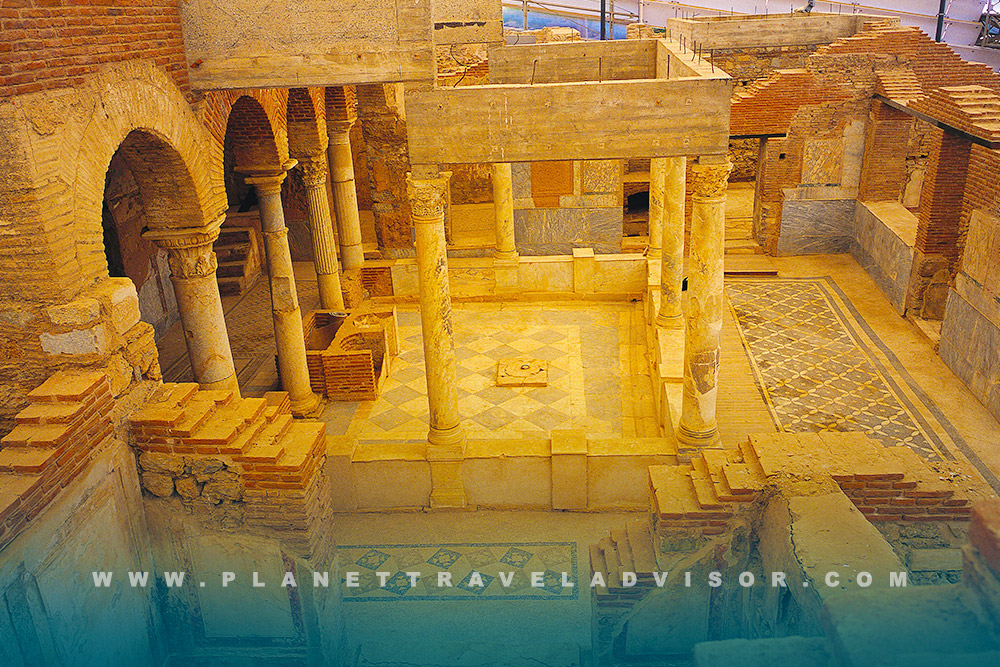
Inside, the single vaulted nave measured roughly 180 m² and was ringed by three tiers of niches, each fitted with wooden armaria (cupboards) to house papyrus rolls. A clever double-wall cavity moderated humidity and temperature, protecting an estimated 12,000 scrolls, making the library the third largest in the Greco-Roman world after Alexandria and Pergamum.
Access to the upper galleries came via hidden staircases built into the side walls, adding structural bracing while keeping the central space open for readers. Scrolls could be consulted on-site but not borrowed, duplication remained labor-intensive, and valuable works rarely left state supervision.
Symbolism in Stone: The Four Virtues
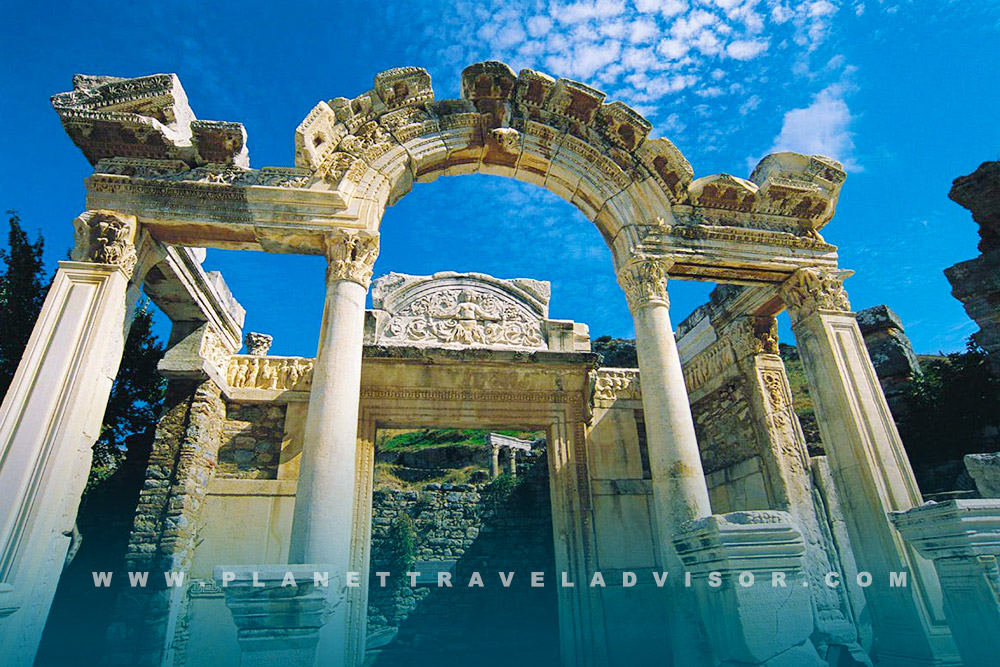
Flanking the three doorways, four marble statues personified the intellectual ideals the library propagated:
- Sophía – Wisdom
- Epistémē – Knowledge
- Ennóia – Intelligence (or Reason)
- Arétē – Excellence (or Virtue)
The originals rest in Vienna’s Ephesus Museum, but modern replicas still occupy their niches, reminding visitors that scholarship was inseparable from moral character in Roman thought. In-situ bilingual inscriptions, Greek on one pier, Latin on the other, welcomed the polyglot populace of Asia Minor, underscoring Ephesus’s role as a crossroads of cultures.
Archaeological Resurrection of the Library of Celsus in the 20th Century
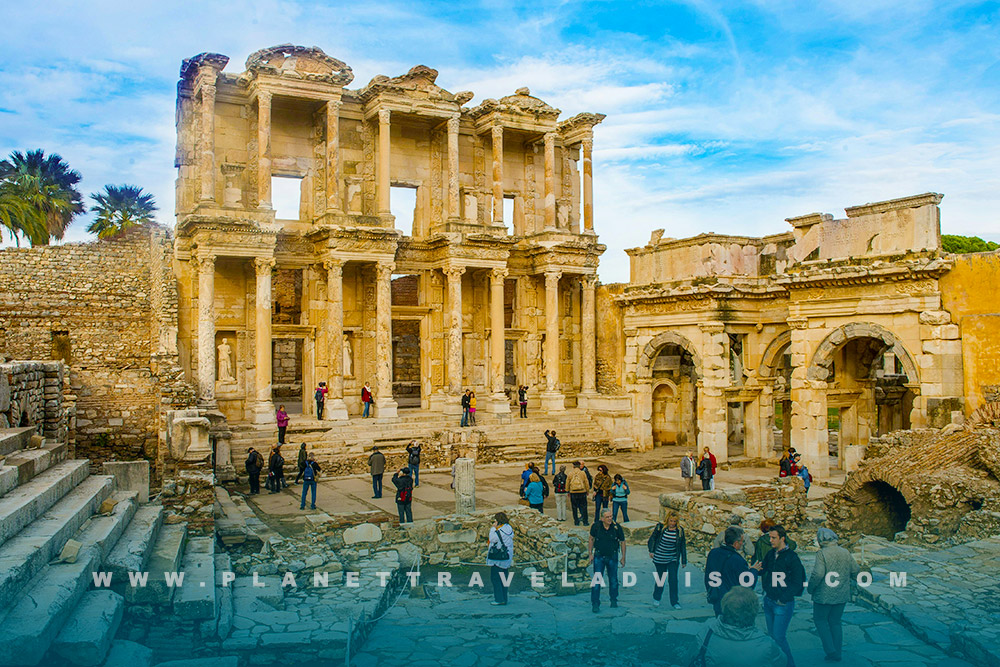
Austrian excavators first exposed the rubble in . Between and , the Austrian Archaeological Institute, led by architect Friedmund Hueber and German archaeologist Volker Michael Strocka, undertook an anastylosis: every surviving block was cataloged, original dowel holes matched, and missing elements replaced with travertine subtly distinct from the antique marble. The rebuilt façade you see today is 85 percent ancient stone, stabilized to withstand modern seismic standards.
The project became a benchmark for ruin conservation, balancing authenticity with safety; its seismic performance was even re-evaluated after the 2020 Aegean Sea earthquake and graded “remarkably resilient”.
Library of Celsus and UNESCO World Heritage
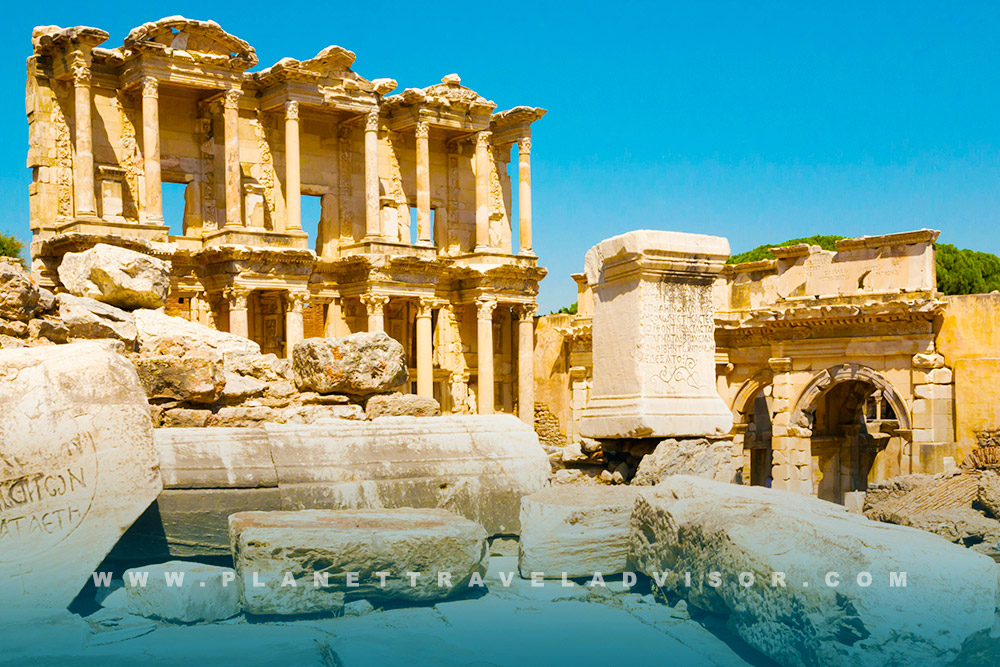
When Ephesus finally joined the World Heritage List in , the Library figured prominently in the site’s Outstanding Universal Value statement as a “grand monument of the Roman Imperial period” that testifies to cross-cultural exchange in the eastern Mediterranean. The façade’s photogenic perfection now graces guidebook covers, Turkish lira commemoratives, and countless social-media feeds, making it an ambassador for the entire archaeological park.
Planning Your Visit to the Library of Celsus
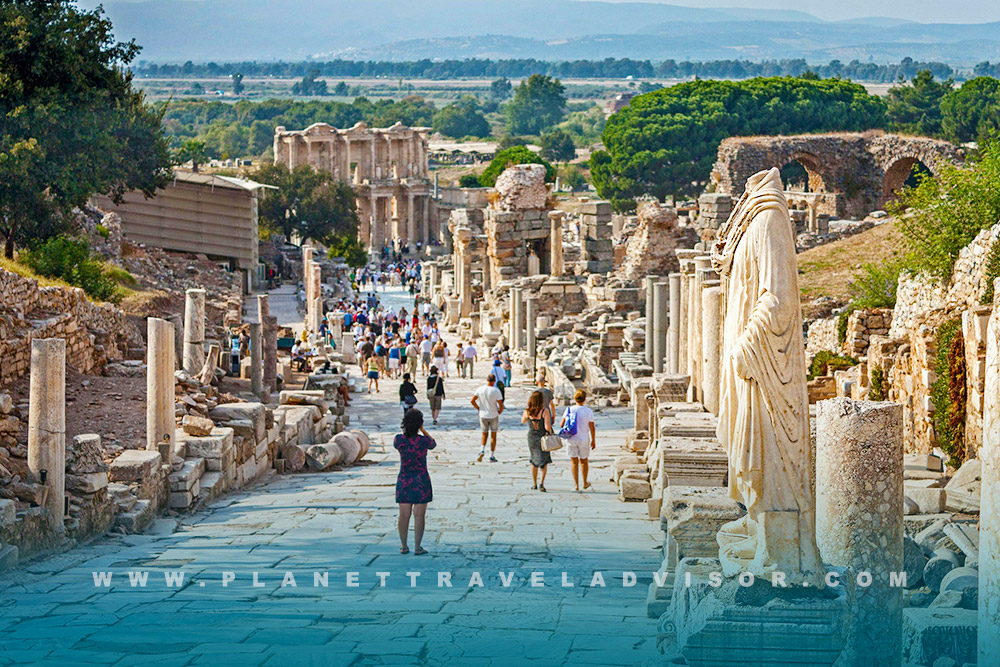
Getting There
Modern travellers reach Ephesus via the town of Selçuk, 50 minutes south of İzmir Airport. Frequent minibuses (“dolmuş”) connect Selçuk’s otogar to the site entrance; taxis or guided day trips from Kuşadası cruise port are effortless alternatives.
Tickets & Hours (2025)
- Entrance to Ephesus: €40 (about 1,400 TRY), children under 8 free with ID. Terrace Houses require an extra supplement. Credit cards or Turkish lira only; euros cash not accepted.
- Opening hours:
April–October: 08:00 – 19:00
November–March: 08:30 – 17:00
Best Time to Go
Spring (April–May) and autumn (September–October) offer mild temperatures (18 – 26 °C) and thinner tour-bus traffic. Peak summer can exceed 40 °C on the marble pavements; winter brings rain but gorgeous diffused light for photographers.
On-Site Tips
- Allow 2–3 hours to stroll from the Upper Gate down past the Odeon, Curetes Street, the Library, and the Great Theatre.
- Wear grippy shoes; polished marble can be slick, especially after rain.
- Photography: wide-angle lenses capture the entire façade; golden hour highlights warm stone hues. Drone use is prohibited without special permits.
- Respect the site: climbing on the steps of the Library is forbidden to protect fragile carvings; security guards enforce the rule.
Fascinating Facts & Lesser-Known Stories about the Library of Celsus
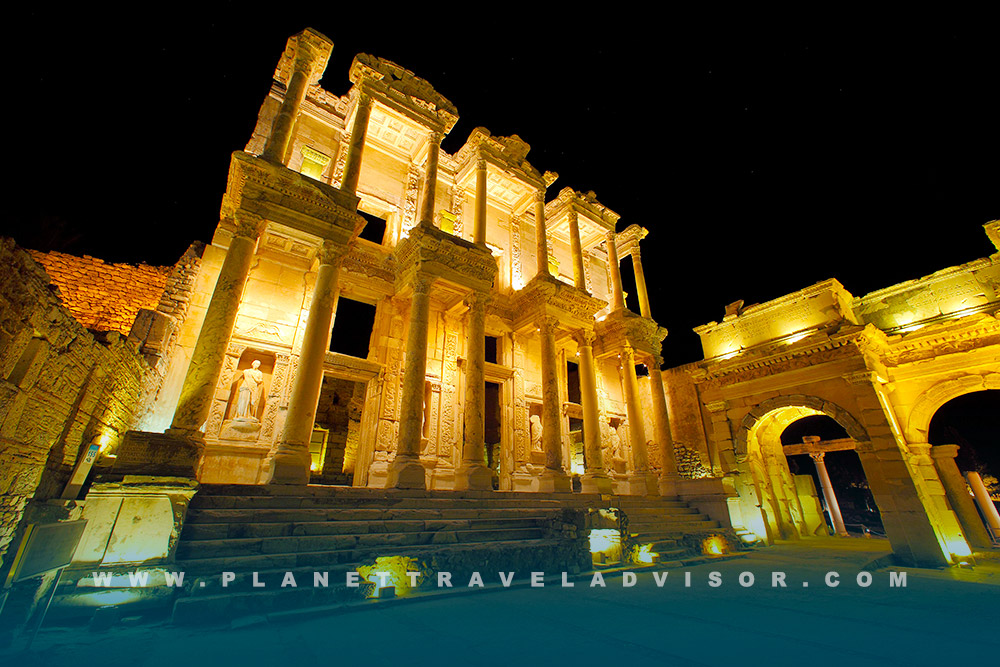
- Hidden Coffin: Visitors cannot see Celsus’s sarcophagus; it rests behind a sealed basement door accessed only by researchers. A viewing window was considered in the 1970s but ultimately rejected over humidity concerns.
- Scenographic Façade: The design echoes theatre backdrops, suggesting that educated Ephesians likened the pursuit of knowledge to a performance of the mind.
- No Real Books Today: While the scrolls perished, archaeologists found cedar-wood fragments and bronze shelf pins, proof of elaborate cabinetry once lining the walls.
- Optical Secrets: Measure the pedestals and you’ll discover they incline 2 cm inward, another subtle trick that stabilised the structure while pleasing the eye.
- Globally Influential: The facade inspired neo-Classical architects from Vienna’s Kunsthistorisches Museum to New York’s Pennsylvania Station (original 1910 façade), both of which borrowed its paired-column rhythm.
Final Reflections
Standing before the Library of Celsus, one senses more than stone and shadow. The building embodies a conversation across millennia about knowledge, memory, and the fragile pact between humankind and time. Its scrolls may be ash, yet the ideals carved into marble, wisdom, understanding, imagination, and virtue, still speak to every traveller who pauses on those nine worn steps. Protecting such places is not merely about preserving ruins; it is about safeguarding the very idea that learning and legacy matter.
Whether you visit in the quiet glow of an October sunset or engage with the Library through scholarship, the experience affirms what Celsus’s son hoped: that architecture can honour the dead, elevate the living, and challenge future generations to keep asking questions beneath eternity’s gaze.
Embark on unforgettable Turkey tour packages crafted for travelers who seek depth, comfort, and cultural insight. Enjoy priority access to top attractions, charming boutique stays, and enriching guidance from passionate locals. Reserve now to take advantage of limited-time seasonal offers and exclusive spring and autumn departures. Travel through Istanbul, Cappadocia, and Ephesus the way it was meant to be experienced.

